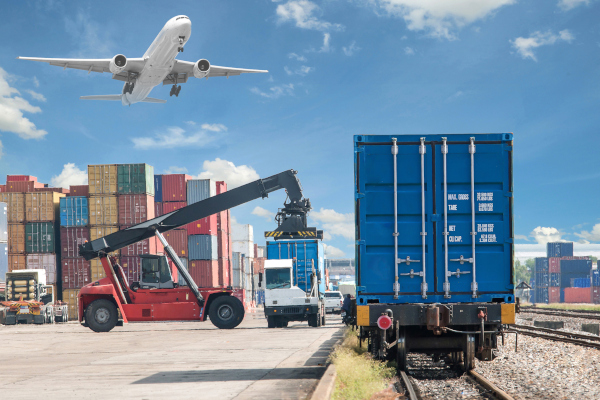New data shows that supply chain networks have been in a state of transformation to improve resilience and prevent future disruptions.
That is the big takeaway from the 2023 State of Logistics Report, released this morning. Produced annually for the Council of Supply Chain Management Professionals (CSCMP) by global consulting firm Kearney and presented by leading third-party supply chain provider Penske Logistics, the annual report offers a snapshot of the American economy via the lens of the logistics sector and its role in overall supply chains.
Unlike last year’s report, which found that supply chains were fundamentally “out of sync,” the 2023 report found that the past year-plus (the report covers 2022 and the early parts of 2023) produced a focus on getting supply chains back in sync.
Dubbed by participants in a pre-release roundtable discussion of the report for media members as the “Great Reset,” the new report finds that supply chains have largely, and continue, to adapt to a new era of resiliency.
“As the logistics sector moves forward from years of supply chain challenges and bottlenecks, our report shows that now is the time to begin thinking seriously and proactively when it comes to building strategic capacity,” notes Balika Sonthalia, senior partner at Kearney and co-author of the 2023 State of Logistics Report, in a press release. “Although the market has swung back in shippers’ favor—to the detriment of carriers—we cannot emphasize enough the importance for all industry participants to begin planning for geopolitical tensions, cybersecurity threats, climate change and related natural disasters, slowing e-commerce growth, and global recessionary factors.”
Among the top takeaways:
Motor. Overall volumes have seen little change, but capacity has increased, resulting in a sharp decline in spot rates. Carrier margins are threatened by low rates and high resource costs with smaller carriers reliant on the spot market under particularly acute pressures.
Rail. Class I railroads saw operating income and total revenue increase, but rising costs undermined operating ratios. Service-related issues like dwell complicate the picture. Aggregate carload volume was static, though levels shifted markedly for some product categories.
Air. Air cargo revenue is projected to decline relative to 2022, but remains above pre-COVID levels. Demand has declined and capacity has surged as passenger flights have resumed and new planes have come online. East-West airfreight rates and jet fuel prices have both fallen.
Water/ports. Seaborne demand is slackening and capacity has swung to an excess in the first half of 2023. Carrier profits are projected to decline sharply with blank sailings making a comeback. Shippers are renegotiating agreements.
Warehousing. Vacancy rates fell sharply, driving up rents. Robust construction is facing hesitant companies that are looking to shed surplus inventory and unsure on whether to take extra space. Pricing and availability are expected to be more favorable for shippers for the remainder of 2023.
Freight forwarding. The market continues to grow as sustained growth of international trade and pressures on shippers to reduce costs and improve efficiency dominate the market. Digital freight forwarding is forecast for a 23.1% compound annual growth rate through 2030. The push for comprehensive forwarding services is driving increased market consolidation.
Third-party logistics. Shippers are increasing their use of 3PLs. Freight under management by 4PLs is growing, although many 3PLs are still not capable of meeting this more demanding logistics level, resulting a 4PL market that is concentrated in a handful of larger players.
Parcel and last mile. The U.S. parcel market is the largest in history, but its percentage of retail sales is flattening. Revenues have increased as major delivery providers have shifted their focus to profitability, resulting in rate hikes.
The report also found that U.S. business logistics costs increased and now stands at $2.3 trillion, up from $1.85 trillion last year. USBLC represents 9.1% of GDP and has grown 46% compared to 2020.
E-commerce continues to hum along, increasing 8% in 2022 to $1.03 trillion, making up 14.5% of the U.S. retail market. When it comes to technology investment, 3PLs are leading the way, with 96% indicated they have migrated to the cloud while just 86% of shippers said the same. Shippers also lag in investing in IoT, at 77% compared to 3PLs 80%.
For a number of businesses, reshoring has gone from a strategic possibility to a market reality. According to the Kearney Reshoring Index, American imports of Mexican manufactured goods have grown by 26% (dating back to spring 2020).
SC
MR


More 3PL
- Q1 sees a solid finish with positive U.S.-bound import growth, notes S&P Global Market Intelligence
- Orchestration: The Future of Supply Chain
- February and year-to-date U.S. import volume is solid, reports S&P Global Market Intelligence
- 2024 retail sales forecast calls for growth, says National Retail Federation
- ISM reports another month of services sector growth in February
- February manufacturing output declines, notes ISM
- More 3PL
Latest Podcast

 Explore
Explore
Topics
Procurement & Sourcing News
- April manufacturing output slides after growing in March
- World Trade Centers offers a helping hand to create resilient, interconnected supply chains
- Bridging the ESG gap in supply chain management: From ambition to action
- Israel, Ukraine aid package to increase pressure on aerospace and defense supply chains
- How CPG brands can deliver on supplier diversity promises
- How S&OP provides the answer to in-demand products
- More Procurement & Sourcing
Latest Procurement & Sourcing Resources

Subscribe

Supply Chain Management Review delivers the best industry content.

Editors’ Picks




